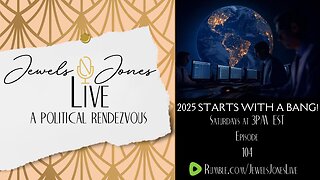Premium Only Content

Analyzing social cohesion in Australia, UK & USA (1-6-22)
https://en.wikipedia.org/wiki/Nambucca_Heads
Broken societies: Inequality, cohesion and the middle-class dream: https://lukeford.net/blog/?p=142699
‘There is no evidence that the ethos of a people can be changed according to plan. It is one thing to engineer consent by the techniques of mass manipulation; to change a people’s fundamental view of the world is quite a different thing, perhaps especially if the change is in the direction of a more complicated and demanding morality’. (Edward Banfield in 1958)
What Is Social Cohesion? https://lukeford.net/blog/?p=142679
* I suggest that we define social cohesion as the belief held by citizens of a given nation-state that they share a moral community, which enables them to trust each other… The very discussion of social cohesion often implies its absence and, even more specifically, the decline of social cohesion. I suggest that we label the decline of social cohesion “social erosion”, which we then can define as fewer citizens in a given nation-state having the belief that they share a moral community that enable them to trust each other…
* In a modern globalized and multicultural world, it is difficult and problematic to cultivate a similarity of mind.
National identity & social cohesion: https://lukeford.net/blog/?p=142671 * [Hans] Kohn’s distinction had its roots in Meineke’s (1970[1907]) distinction between “staatsnation” (state nation) and “kulturnation” (culture nation). Kohn’s basic argument was that in Western Europe (his examples were France, the UK, The Netherlands and Switzerland), the borders of the state were settled prior to the rise of nationalism, which created a strong focus on the new democratic procedures that could legitimize the existing state. Nationalism therefore contained a narrative about turning oppressed inhabitants into citizens. In a less positive interpretation, Tilly calls it a “state-led nationalism” where “rulers who spoke in a nation’s name successfully demanded that citizens identify themselves with that nation and subordinate other interests to those of the state” (Tilly 1994:133). In contrast, the borders in Eastern Europe were settled after the rise of nationalism, which created a strong focus on the ethnic/cultural dimension of nationhood. Tilly calls it “state-seeking nationalism” where “representative of some population that currently did not have collective control of a state claimed an autonomous political status, or even a separate state, on the ground that the population had a distinct, coherent cultural identity” (Tilly 1994:133). Kohn used the terms “Western” and “Eastern” both to denote the geographic locations of the various ideas of the nation (Kohn drew the line between the area west of the Rhine and the areas east of the Rhine) and to denote two different ideal types of perceptions of nationhood.
Join this channel to get access to perks:
https://www.youtube.com/channel/UCSFVD7Xfhn7sJY8LAIQmH8Q/join
https://odysee.com/@LukeFordLive, https://lbry.tv/@LukeFord, https://rumble.com/lukeford
https://dlive.tv/lukefordlivestreams
Listener Call In #: 1-310-997-4596
Superchat: https://entropystream.live/app/lukefordlive
Bitchute: https://www.bitchute.com/channel/lukeford/
Soundcloud MP3s: https://soundcloud.com/luke-ford-666431593
Code of Conduct: https://lukeford.net/blog/?p=125692
https://www.patreon.com/lukeford
http://lukeford.net Email me: lukeisback@gmail.com or DM me on Twitter.com/lukeford
Support the show | https://www.streamlabs.com/lukeford, https://patreon.com/lukeford, https://PayPal.Me/lukeisback
Facebook: http://facebook.com/lukecford
Feel free to clip my videos. It's nice when you link back to the original.
-
 4:03:52
4:03:52
Luke Ford
2 days agoTerror Attack In New Orleans Kills 10 (1-1-25)
244 -
 LIVE
LIVE
Jewels Jones Live ®
23 hours ago2025 STARTS WITH A BANG! | A Political Rendezvous - Ep. 104
2,043 watching -
 LIVE
LIVE
Viss
3 hours ago🔴LIVE - PUBG Duo Dominance Viss w/ Spartakus
664 watching -
 LIVE
LIVE
MDGgamin
6 hours ago🔴LIVE-Escape From Tarkov - 1st Saturday of 2025!!!! - #RumbleTakeover
288 watching -
 LIVE
LIVE
SpartakusLIVE
2 hours agoPUBG Duos w/ Viss || Tactical Strategy & HARDCORE Gameplay
204 watching -
 LIVE
LIVE
FRENCHY4185
3 hours agoFRENCHY'S BIRTHDAY BASH !!! THE BIG 40 !!!
321 watching -
 1:23:33
1:23:33
Michael Franzese
11 hours agoThings to look forward to in 2025
46.1K27 -
 3:23:02
3:23:02
I_Came_With_Fire_Podcast
12 hours agoDefeating VICTIMHOOD: Advocacy, Resiliency, and Overcoming Abuse
67.2K14 -
 2:00:56
2:00:56
Game On!
19 hours ago $9.58 earnedNFL Experts debate if Joe Burrow will make HISTORY in Week 18!
92K10 -
 2:07:57
2:07:57
InfiniteWaters(DivingDeep)
4 days agoHOW TO ENTER 2025 LIKE A BOSS!
27.4K1